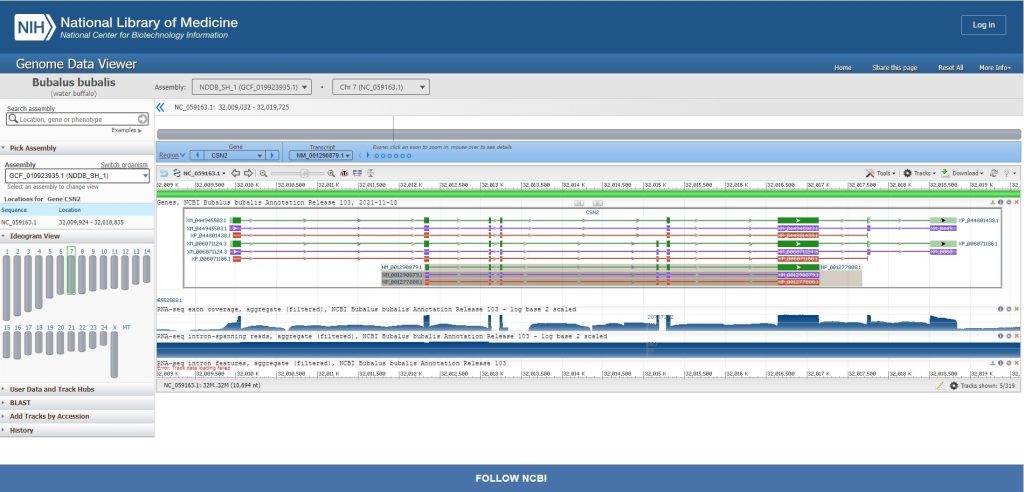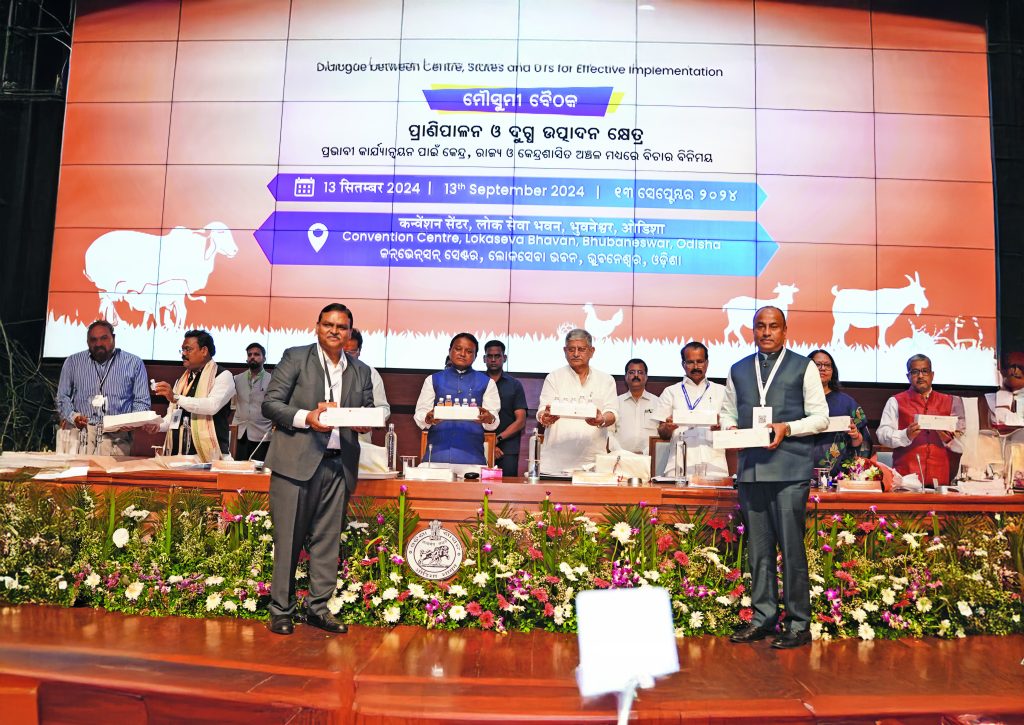4.1. Launching of Unified Genotyping chip for cattle and buffaloes:
NDDB in collaboration with ICAR-National Bureau of Animal Genetic Resources (ICAR-NBAGR), National Institute of Animal Biotechnology (NIAB), and BAIF Development Research Foundation (BAIF) led the development of two customized genotyping chips i.e. “GAUCHIP” and “MAHISHCHIP” for cattle and buffaloes, respectively to provide genotyping services at an affordable rate to the farmers. The Honourable Prime Minister launched “GAUCHIP” and “MAHISHCHIP” on 5 Oct. 2024.
4.2. Global reference buffalo genome:
NDDB successfully completed high quality buffalo genome assemblies (assembly accession: GCA_019923935.1 (NDDB_SH_1) and GCA_019923925.1 (NDDB_DH_1) in collaboration with United States Department of Agriculture (USDA). Both genome assemblies are annotated and the genomes are complete with gene and protein level features. Buffalo genome NDDB_SH_1 is now available publicly as Reference representative (Refseq) genome for Buffalo species (Bubalus bubalis) in the National Centre for Biotechnology Information (NCBI) database, USA.

4.3. DNA Biobanking:
India has 53 registered cattle and 21 registered buffalo breeds. To create a larger reference population as well as implement Genomic selection for important Dairy breeds of Cattle and Buffaloes NDDB initiated DNA biobanking of important dairy breeds since 2015. At present, NDDB maintains a DNA repository of 2.2 lakh samples for 30 cattle breeds and 12 buffalo breeds, including swamp buffalo. Blood/ tissue samples of milk recorded animals and breeding bulls are being stored under biobanking initiative.
4.4. Sex sorting
To promote the use of sex-sorted semen for production of female progeny, NDDB has successfully developed an indigenous sex-sorting machine, “Gausort.” This technology was inaugurated by the Hon’ble Prime Minister on October 5, 2024.This technology has significantly reduced the cost of sex-sorted semen doses, thus will make it more accessible to a wider segment of farmers. The deployment of this technology is expected to increase farmers’ incomes through enhanced milk production and contribute to the reduction of stray cattle populations.
The technology has already been installed at the Central Frozen Semen Production and Training Institute (CFSP&TI) in Hessarghatta, Bengaluru and Dama Semen Station, Banas Dairy.
4.5. Development of indigenous IVF media
OPU-IVEP-ET is deployed to produce a greater number of calves from a female animal during its lifetime. Various media required for OPU-IVEP-ET is presently imported into the country with high cost and limited shelf life, which led NDDB to develop indigenous IVF media. Indigenous IVF media suite will help to reduce embryo production costs, making the technology cheaper for Indian dairy farmers.
Shri Mohan Charan Majhi, Hon’ble Chief Minister of Odisha and Shri Rajiv Ranjan Singh, Hon’ble Union Minister of Fisheries, Animal Husbandry & Dairying launched the indigenous IVF media suite ‘Shashthi’ developed by NDDB with its subsidiary IIL.

4.6. Hub and Spoke model for propagating the OPU-IVEP-ET Technology
NDDB is pursuing the “Hub-and-Spoke” model for propagating the OPU-IVEP-ET Technology. In this, the NDDB’s OPU-IVEP facility acts as “Hub” and the Milk Unions (MUs) act as “Spoke”. Hub is responsible for production of embryos and Spokes are responsible for selection of donors and selection and synchronization of recipients for ET at the farmers’ doorsteps. In the initial phase, NDDB provides intensive training, and on-the-job hand holding. Later, trained veterinarians of MUs perform OPU and ET independently. The model reduced the cost of pregnancy establishment through IVF embryos, created a pool of trained manpower, along with saving initial laboratory establishment cost at MU level.
Presently NDDB is using this model for production of HGM bull calves through OPU-IVEP-ET, increasing the genetic gain.

